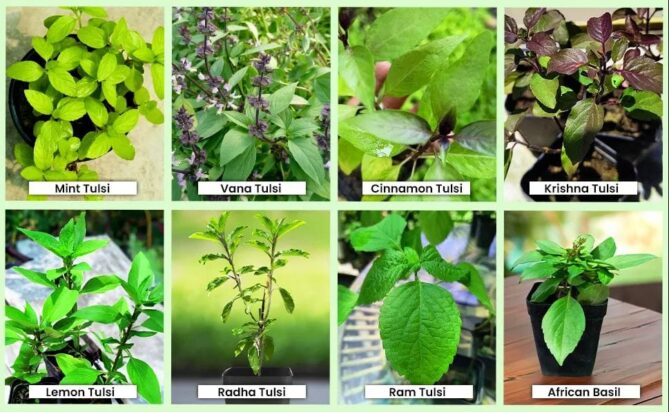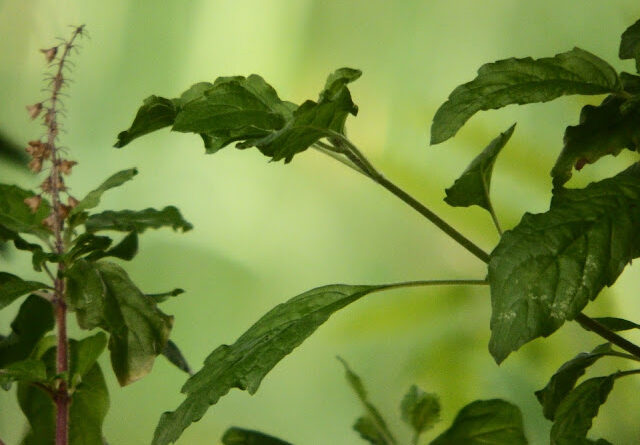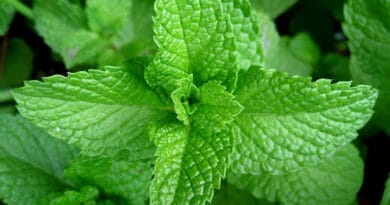Cultivation of Tulsi ; A Beneficial Medicinal Plant
Cultivation of Tulsi: Purify the environment, encourage positive energy, and provide protection against bad effects.
Tulsi (Ocimum sanctum) is a perennial plant that can be grown from seeds or cuttings. It is best grown in tropical and subtropical climates with good sunlight exposure.
It is probably the most established herb in the world. Tusi’s mending and invigorating properties are the most cherished information worldwide. Blessed Basil, or Tulsi, is viewed as hallowed in Hinduism and is loved as the ‘Goddess of Devotion’ in many Indian families. Tusi was developed for strict and clinical purposes and for its basic oil, which is frequently utilized in Ayurveda.
Tulsi leaves are utilized in an assortment of culinary preparations. Notwithstanding the flavor, the culinary herb is said to protect and improve the properties of the food. From a sound gut to more grounded resistance, the advantages of tulsi leaves are considerable. We think about the profound centrality of developing the Tulsi plant; yet, let us reveal a greater number of Tulsi’s advantages.
2. O. Gratissim (Van Tulsi or Ram Tulsi) BHA
3. O. Kilimencherikam (camphor basil)
4. O. Senkatam (domestic basil)
5. O. Viridi (wild basil)
Nutritive Value of Tulsi:
Vitamins A, C, and K, as well as minerals like calcium, magnesium, phosphorus, iron, and potassium, are abundant in tulsi. It is also well-known for its therapeutic qualities, which include enhancing digestion, increasing metabolism, and decreasing inflammation.
| Typical values | Per 100 g | Typical values | Per 100 g |
| Calories | 22 kcal | Saturated Fat | 0 mg |
| Carbohydrates | 2.7 g | Potassium: | 295 mg |
| Dietary fiber | 1.6 g | Sodium | 4 mg |
| Protein | 3.2 g | Calcium | 177 mg |
| Fat | 06 g | Iron | 3.17 mg |
Benefits of the Tulsi:
- Anti-Inflammatory.
- Healthy skin.
- Home Remedy for Cough.
- Stress Buster.
- Tulsi for Fever.
- Tulsi forestalls coronary illness.
Types of Tulsi plants:

Tulsi, also called basil, comes in a variety of forms, such as Rama Tulsi, Krishna Tulsi, Vana Tulsi, and Kapoor Tulsi.
Rama Tulsi: This type, which is also referred to as Sri or Lakshmi Tulsi, is prized for its potent aroma and refreshing flavor. In Nepal and India, it is the most prevalent variety of tulsi. Compared to other types, it is more resilient to winter. It is well-known for having antioxidant and anti-inflammatory qualities.
Krishna Tulsi: The purplish-green leaves of this variety are also referred to as Shyam tulsi. This is a cultivar of Ocimum tenuiflorum.
Vana Tulsi: This type, which is also referred to as wild basil, has crisp, light green leaves. It can be found in Asia, Africa, the Indian Plains, and the Himalayas. It is well known for increasing vitality and enhancing mental clarity.
Kapoor Tulsi: This variety, also called clove basil, features pink or purple flowers on tiny, light green leaves. It is a spice in Thai cooking. It is also utilized for religious, medicinal, and essential oil purposes.
Important Varieties of Tulsi ;
RRL-12, RR LOG-14
Land and Climate Requirements for Tulsi Cultivation:
Tulsi plants can be grown easily in different climatic conditions. And its plant also grows in highlands. For basil cultivation, loam and sandy loam soil having pH-5.0-8.5 and good water-holding capacity are considered suitable. For this, both tropical and subtropical climates are suitable.
Seeds and Sowing of Tulsi Crop
Plough the fields well before transplanting; the first sowing of seeds is done in the nursery. 1.0 kg seeds/hectare is required. The best time to sow seeds is in July.
Raise the nursery beds 15-20 cm from the ground. Sowing of seeds is done in the nursery at a ratio of 1:10 by adding sand with 8-10 cm distance apart in the rows. 30 days after sowing, the seedlings become suitable for transplanting in the field. Spray the urea @ 20 g / lit of water for quick growth in the nursery.
Transplanting of Tulsi Crop ;
Transplanting should always be done in the evening hours during the dry season. Irrigation should be done immediately if there are no chances of rain after the transplanting.
Transplanting should be done by maintaining the distance.
Row to row: 60 cm,
plant to plant: 30 cm.
Irrigation and weeding in the tulsi crop
Irrigation is not required during the rainy season. Irrigating the field at 15-20 day intervals is beneficial. The first wedding should be done one month after the transplant. The second weeding is done 25 days after the first weeding. In large areas, it is beneficial to do hoeing by a tractor.
Requirement of Manures and Fertilizers in Tulsi Crop
Apply well-rotted cow dung manure at 15 tons per hectare at the time of preparation of the field. Apart from this, 75 kg of nitrogen, 40 kg of phosphorus, and 40 kg of potash should be applied per hectare before transplanting; one-third of the nitrogen and the full quantity of phosphorus and potash should be applied at the time of field preparation. The remaining quantity of nitrogen should be applied 20-25 and 40–45 days after transplanting in a standing crop.
Plant protection in Tulsi crop:
Tulsi isn’t susceptible to serious pests/diseases except for some minor pests like leaf rollers, which may be controlled by the application of 0.2% Malathion or 0.1% Methyl parathion whenever any problem is noticed in the growing fields of tulsi.
Tulsi plants require minimal or no use of chemical pesticides in their production process. Organic practices include control measures using neem-based formulations. Animal oil resin soap is often wont to manage such sucking pests. Horticultural extracts of garlic, Vitex negundo, Lantana camarana, Clerodendron inerme, and Calotropis gigantea are most often used periodically to control the pest in combination with pesticides
Diseases like mildew are often controlled by spraying with 0.3% wettable sulfur. Likewise, seedling blight and plant disease are often controlled by drenching the nursery beds with a 0.1 percent solution of mercurial fungicide and adopting phytosanitary measures.
Harvesting and Yield of Tulsi Crop
Harvesting of the tulsi crop normally starts after 90 days of planting, and subsequently, the crop may be harvested every 75-day interval. Harvesting is done at the full-bloom stage of the crop. Cutting of the plants is done at 15 cm from ground level to ensure good regeneration for further harvests. The yield and oil content are higher in plants harvested during bright sunny days
When the plant is fully flowered and the lower leaves of the plant become yellow, then harvesting should be done.
The average yield of tulsi is about 20-25 tonnes per hectare and 80-100 kg of oil yield.
Basil oil can be obtained from the distillation of the whole plant.
The distillation method is used extensively by farmers for its oil exertion as its oil is relatively cheap. Harvested crops are left open in the field for 6-8 hours before distillation. By doing this, the excess moisture present in the leaves is removed. A distillation of the entire plant yields a yield of 0.25 percent oil, while the flowering order of the plant yields an oil yield of up to 0.4 percent.




